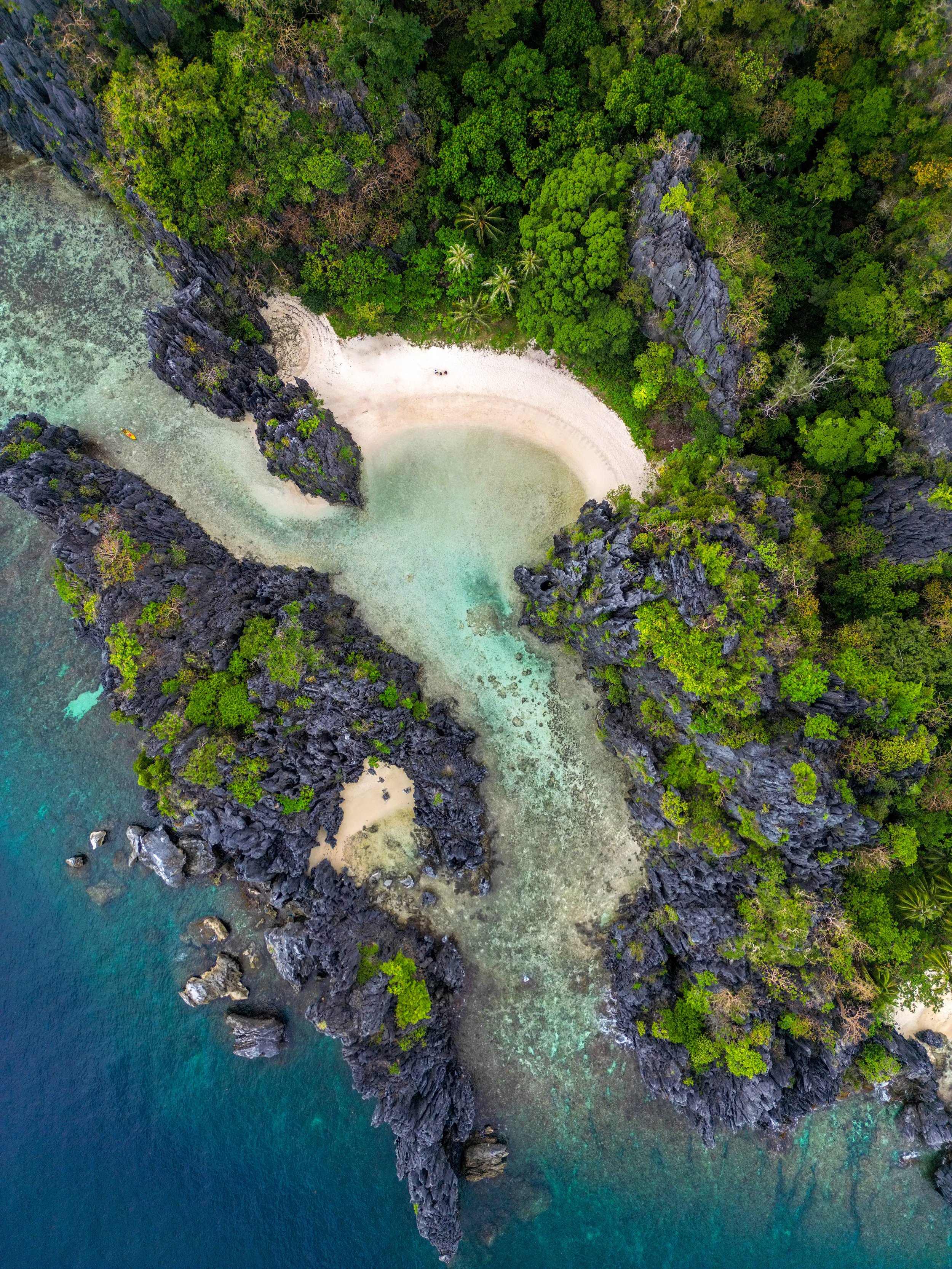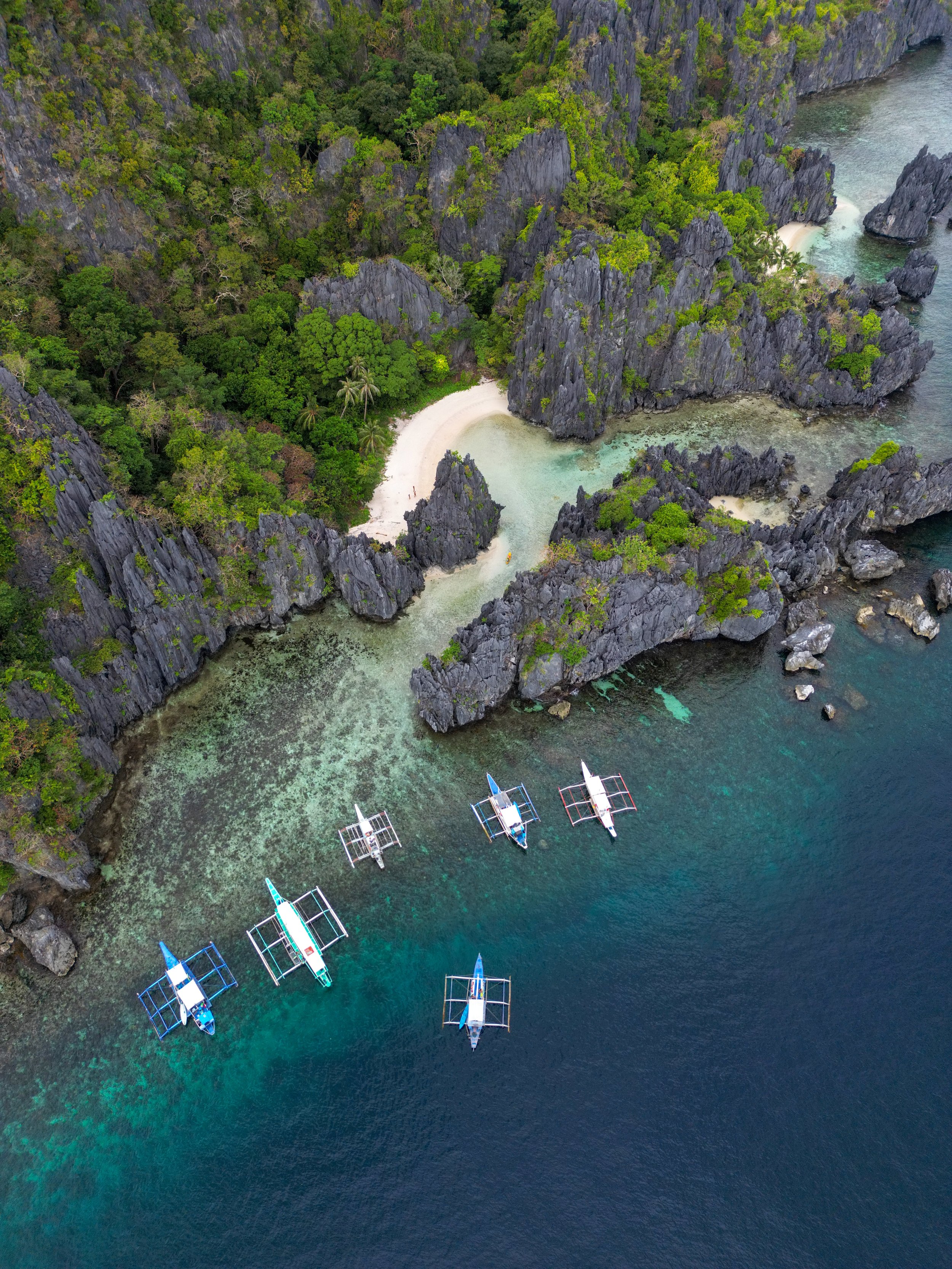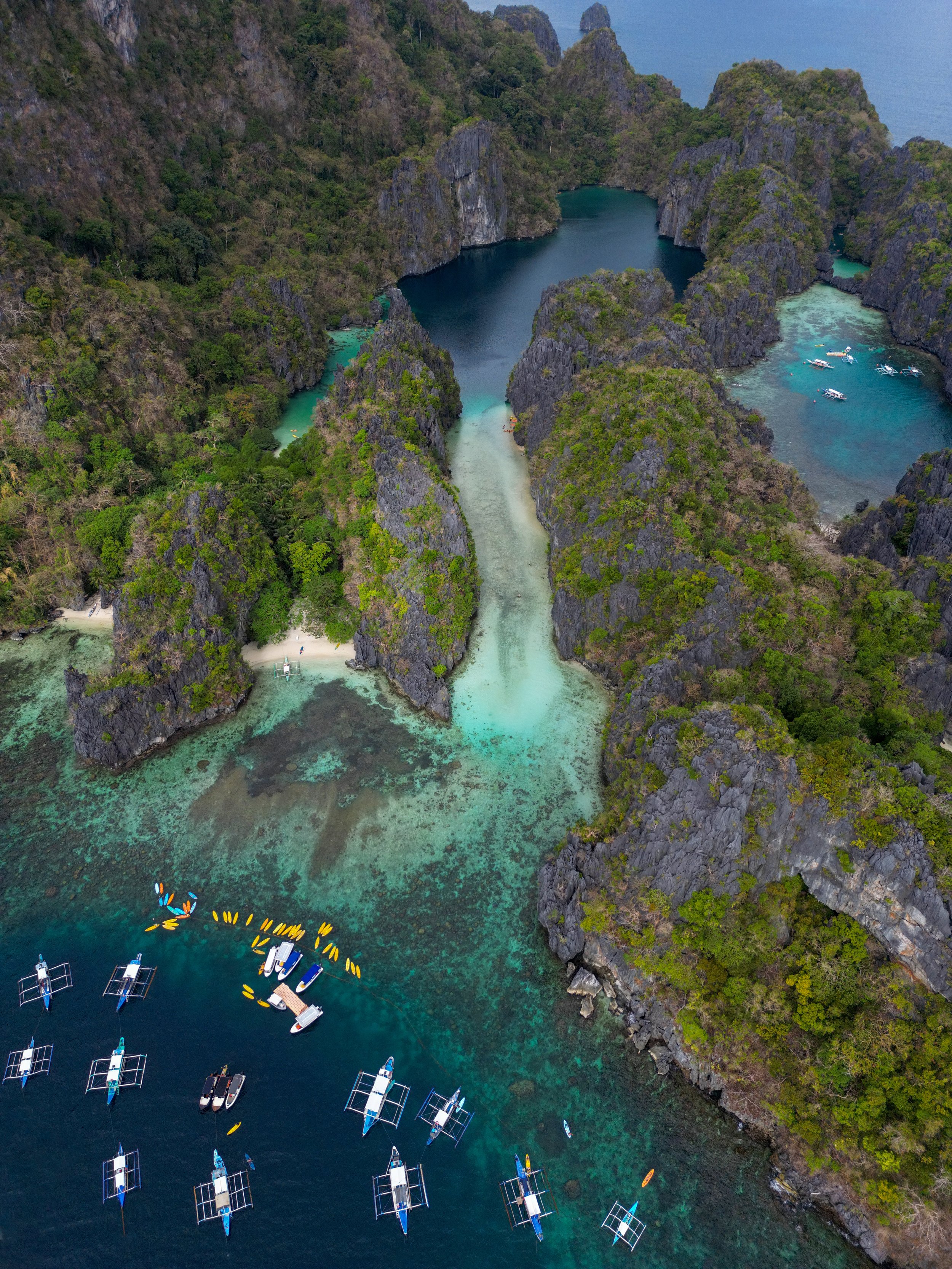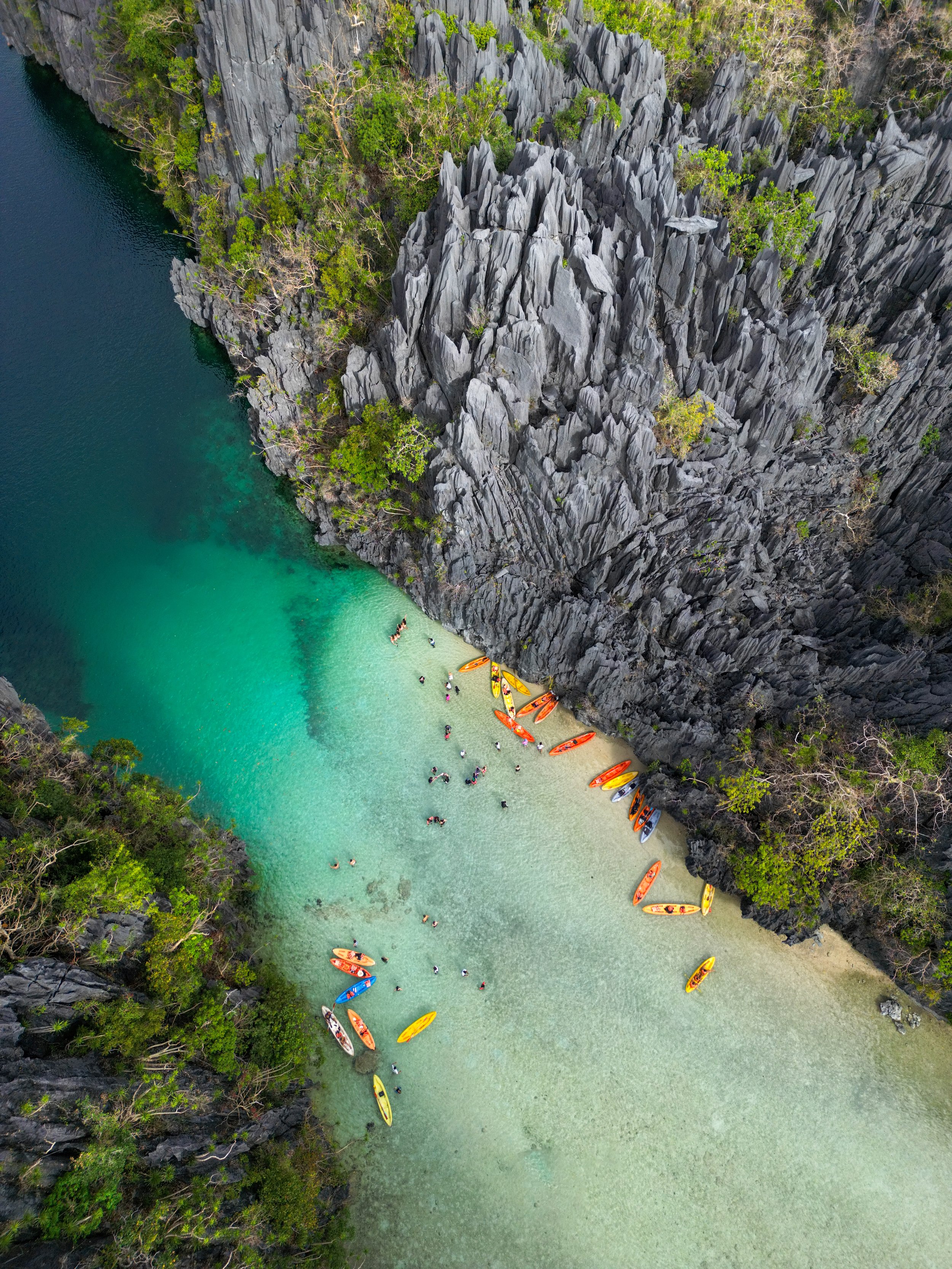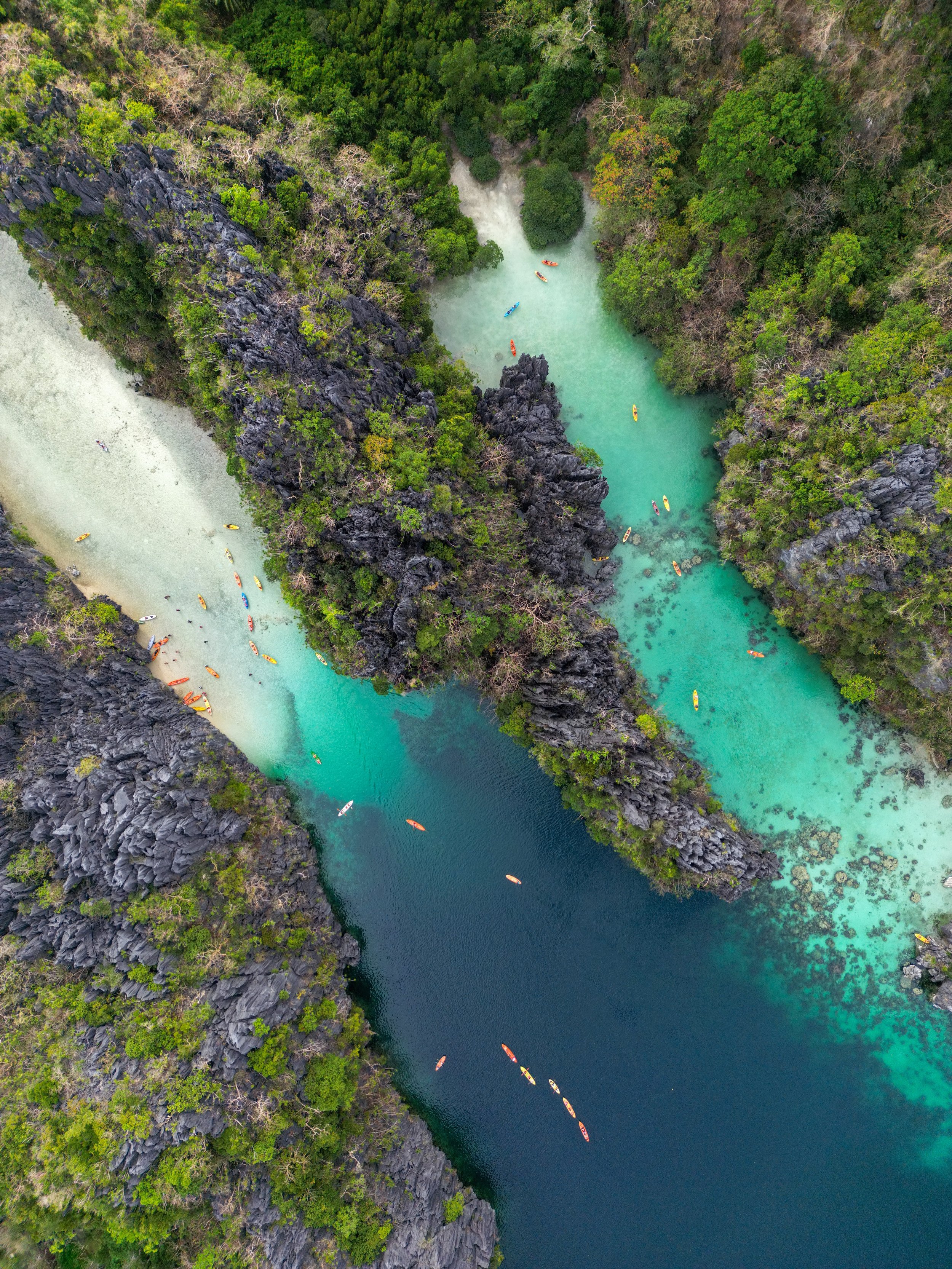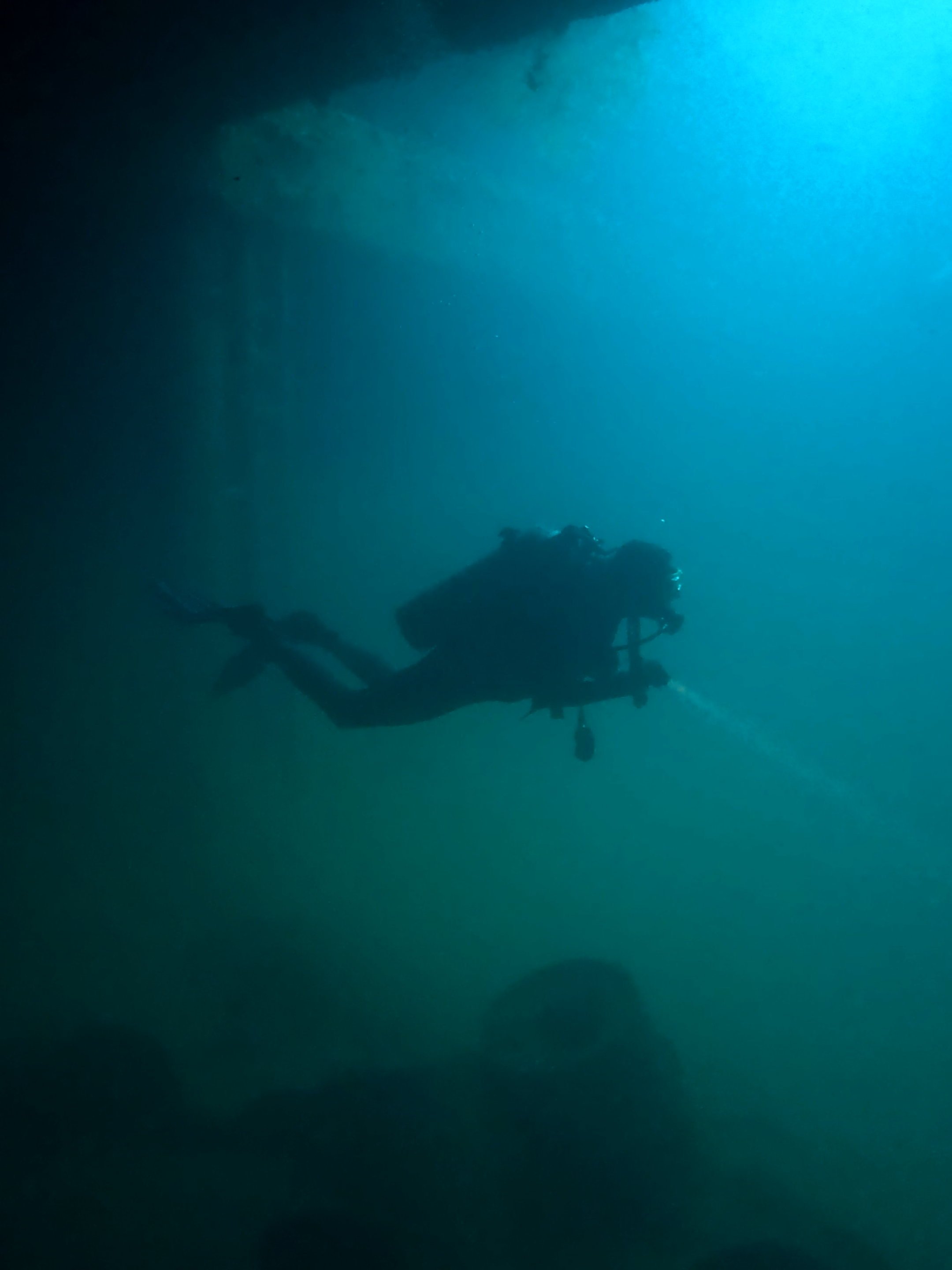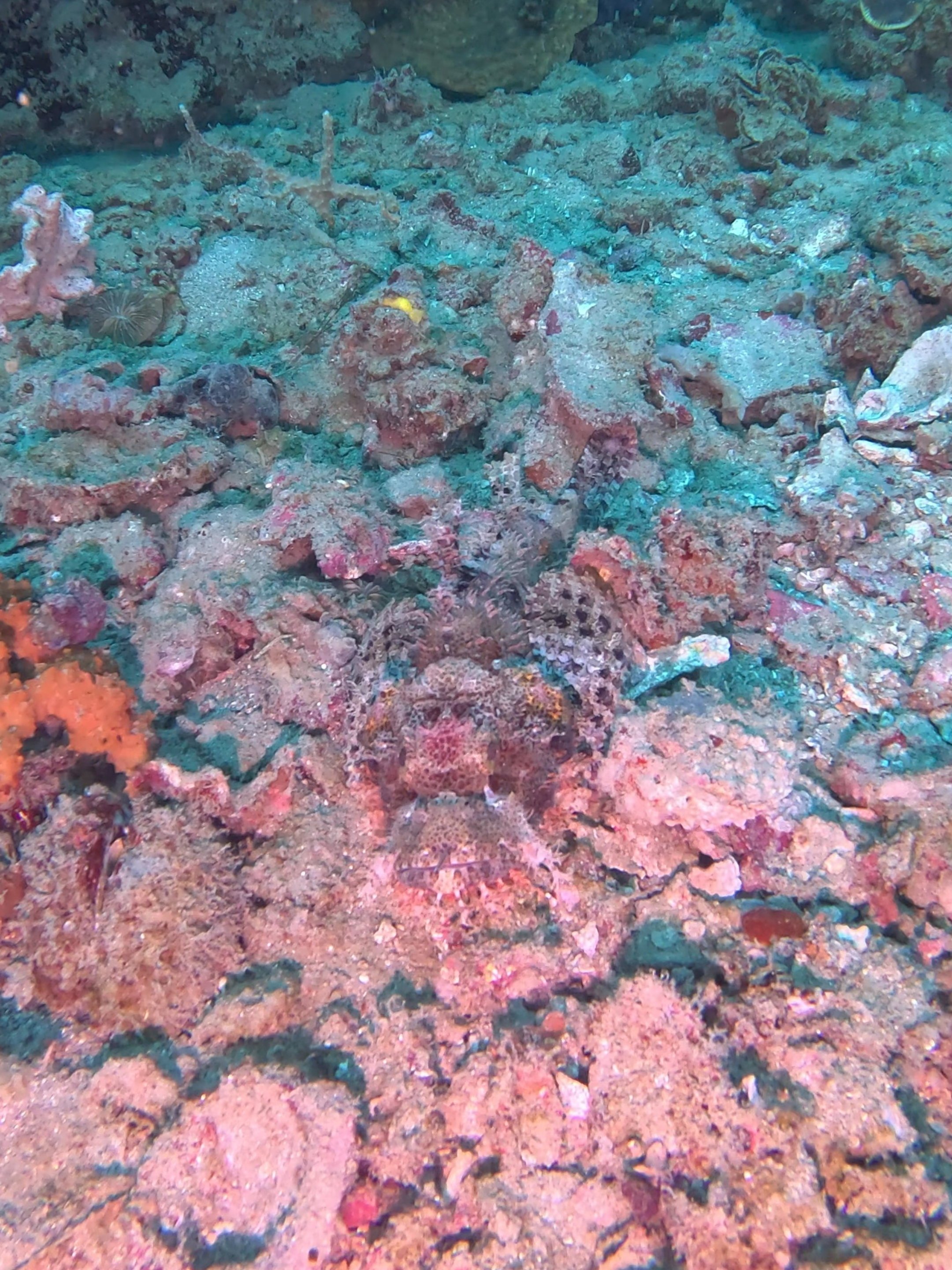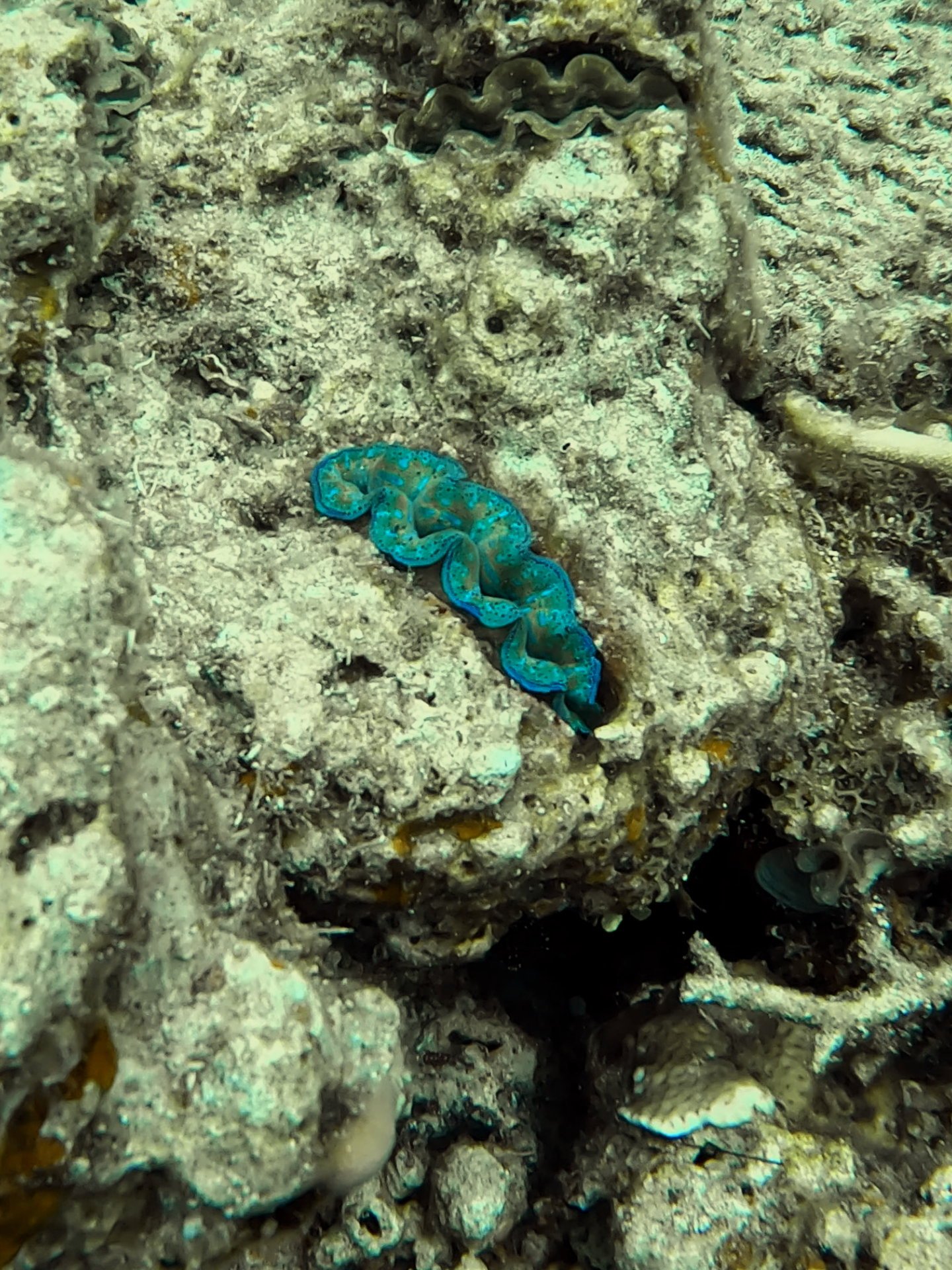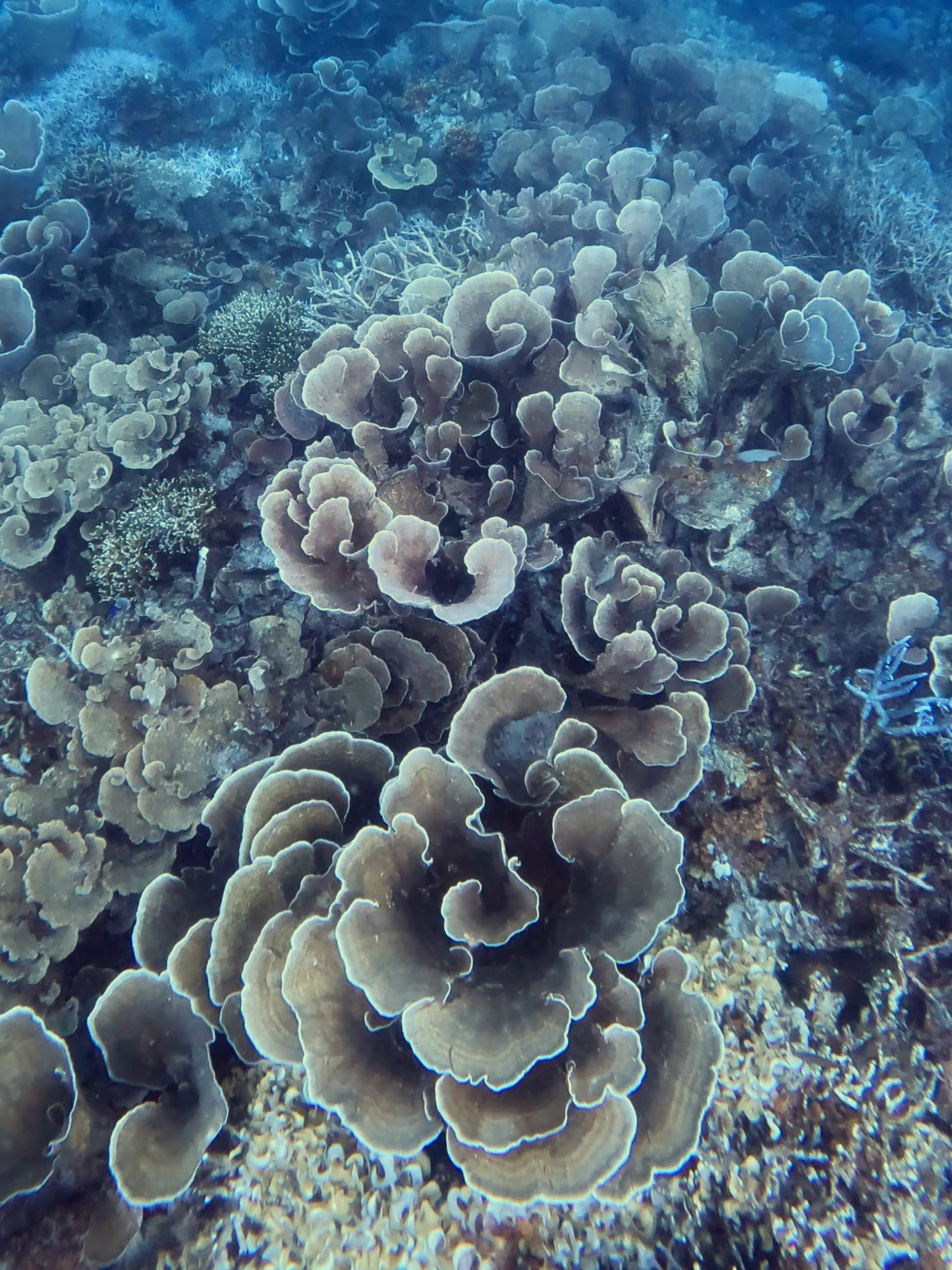Palawan Paradise
Phillipines Blog Part 2
February 3rd
It was early when we got in the car with the same driver from our other long drives who had already been on the road for 3 hours to come for us in Moalboal and headed back to Cebu City. The drive was a bit tense and longer than planned as we hit tons of traffic in Cebu right before reaching the airport, but we made it and took an hour and a half flight to El Nido, a city on the north side of the island of Palawan.
I had heard this part of the Philippines was the most beautiful, with its long white beaches and tropical island vibes. This was evident as we looked out the window and saw that gorgeous coastline as we landed. We landed around 15:00 and took tuk-tuks from the airport into the city. Casey and I went to a hostel where we had a night booked to meet fellow travelers. We booked Friendz Hostel, which has been voted one of the best in the world, on Hostelworld.com. It did not disappoint.
I love staying in hostels because I am a very social person and love meeting people from all over the world. The perception of hostels tends to be negative whenever I mention that I stay in them, which is far from the truth. Just like there are shitty hotels, there are crappy hostels, but you also get what you pay for. Nowadays in many hostels you can get a private room so you can have the comfort of your room but still enjoy the social aspects. We met many wonderful people at the hostel and headed out to the bars with our new friends.
February 4th
The main thing to do in the El Nido area is go on island tours. There are four island tours: A, B, C, and D, and they all go to different areas. This was done to decrease the site's tourism traffic, as this is an extremely popular thing to do. We had two full days here, and my friends who have been before suggested doing tours A and C as they are the most photogenic and, as a drone pilot, the ones I wanted to visit the most.
Today, we were doing Tour C. We chose not to join a group tour but rented our boat privately (super affordable) with our own guide and captain for the day. This way we could leave an hour earlier and get to the sites before they became crowded. We met our guide at the beach at 8:00 am, got on to the boat and made our way to our first stop of the day, Helicopter Island. Named because from the angle you approach it, it looks like a helicopter without the blades. We stopped for 30 minutes. I flew my drone, and Casey and my mother went for a little snorkel.
We then boated over to Hidden Beach, which was my absolute favorite. It was a walk through the water to the main area, but it highlighted the magic of this area: giant limestone cliffs covered in foliage jutting out of the teal-blue crystal-clear water.
For our lunch stop, we parked on the beach at the Matinloc Shrine and went for a snorkel while the guide and boat captain prepared our lunch. The water here was much warmer than in Cebu as we were farther south. The snorkeling area was shallow and had clownfish, beautiful corals, turtles and even reef sharks around. We then had a good lunch, and I flew my drone and got shots of the sounding area.
Our next spot was Secret Beach, which required us to swim into a cave, so I flew my drone from the boat, which I normally hate doing as landing it on the boat gives me high anxiety. Luckily, our guide had worked with other drone pilots on his boat, so he knew exactly how to snatch them out of the air on their way down. We made our way into the beach area, and seeing this little slice of unknown beach was cool. The views and everything around us were just stunning.
We spent a couple of minutes in the area and then returned to the boat, as it was time to head back to the mainland.
That night, we visited the seafood market where they had everything imaginable freshly caught, for sale and had a great seafood dinner, watching the epic views of the sun going down on the surrounding hills. Then, Casey and I headed back to the hostel for a great night with the cool people we had met the other night, and my mom went to her hotel.
February 5th
Today, we did the most visually stunning tour for drone users, Tour A. We started early again, an hour before all the other boats with tour groups left. Our first destination was a small lagoon, which is usually a part of tour D, but since we had a private boat, we could add that to our itinerary. We were the first boat there and got kayaks to paddle into the area. The water was perfectly still, and the whole thing seemed surreal as we were the only ones there. When we made our way out, I launched my drone to get shots of the area. It was drop dead beautiful from above. I could even see a big lagoon on the other side of the mountain, where we would be going next.
When we arrived at the Big Lagoon, there were already a decent number of people there. We got into a kayak, and my mom and brother dropped me off in a shallow area so I could launch my drone. This place was stunning. I liked seeing the kayaks around for the tourists because it gives the photos a human element and a distinct perspective.
We then headed to Shimizu Island for lunch and snorkeling. Right after lunch, I launched the drone and got nice shots of the surrounding area. Then, I went in the water with my mom and brother. There were lots of clownfish and turtles around, and the visibility was not the best, but I appreciated the biodiversity.
Our next stop was a cave we had to walk into that was closed off from the outside but open at the top. We took family photos and then headed to the seven commandos.
We had a few beers and hung out. At this point, the wind was coming up, so I flew my drone, but it was not handling the wind well. I only got a couple of photos before needing to land it. We headed back to El Nido to shower and get ready for the evening.
This was our last evening in El Nido, so Casey and I went out to a sunset spot with friends we had met from Friendz Hostel. We had great fun with everyone and went to dinner with our mom after watching the sun set.
One of my favorite things about traveling is meeting all the amazing people exploring the world and hearing their stories. After a long night out with good people, we headed to bed because tomorrow we would be flying to a very cool spot in this part of the Philippines. Busuanga is known for its famous World War 2 shipwrecks, and we were looking forward to diving on them.
February 6th
I woke up early to have breakfast with the good friends I had met, and then we headed to the airport around 10:00, which was nice after all the super early wakeups we had been doing for most of the trip. What impressed me about the airport in Palawan was that they had a sign talking about the negative impacts of keeping shells, which I love because it is part of the Leave No Trace principle. Take nothing but photos and leave only footprints. Nature is not here for us; we are here for it. Shells belong to nature, and many organisms utilize them even after the animal in them dies. To me, that means more than sitting on your coffee table back home.
The flight to Busuanga was short, and we got into a van. It took about an hour to get to Coron Town, where we would be for the next four days. My brother and I dumped our things in my mom’s hotel room, and we went over to Reggae divers to get all our equipment and sign the paperwork. We explored, had lunch, and then relaxed that evening. Casey and I went to a hostel for the night and met more great people again, from all over the world.
February 7th
We woke up early and got a ride from the Dive center to the loading area, where we boarded a smaller boat to head to the dive boat. Our plan for the day was to dive three wrecks: the Olympia Maru, the Morazan Maru, and the Okikawa Maru.
After the briefing, the boat headed off to the west of the island, and about an hour later, we arrived at the location of the first wreck dive for the day. The Olympia Maru was a 137-meter-long Japanese cargo vessel that was sunk on September 4th, 1944, by US Task Force 38 during a raid. The ship was part of a large fleet anchored in the lagoon until they all sank. We jumped in the water and headed down to the wreck. We saw the wreck around 20 meters down. The water was green and not that clear around here. A lot of nutrients and plankton in the water will create those conditions. We headed to the front of the ship and were greeted by a large school of yellow snapper with trevally and larger fish around. We then turned our dive lights on and dove through a hole that had been punctured on the ship's side.
I love wreck diving because it is a more challenging style of diving, and you must be very aware of your surroundings and proficient at diving. The first area we visited was the area with all the oil drums. The visibility in the ship was poor, which created an eerie ambiance to the dive. Around that area, we saw a bunch of broken bottles. After 30 minutes, we made our way out of the ship and started circling the ship from the outside. We finished the dive, had our surface interval with snacks, and then headed to the next wreck.
This wreck was the Morazan Maru. This Cargo vessel went down in the same attack as the Olympia Maru. The Morazan sits on its starboard side, so when you enter, you can get slight vertigo because it is sideways, making your brain try to orient itself. This was my favorite shipwreck of the day as the maneuvers were fun and there were tight spaces to navigate.
About halfway through the ship, we came to this air pocket and carefully surfaced into it but kept our regulators in our mouths as the air is toxic. Getting into an air pocket deep underwater is always a strange feeling.
When it was time to head out of the ship, we circled up to the port side of the wreck, which is in about 12-16 meters of water, and there were a lot of large lettuce corals, and I found crocodile fish and scorpionfish. Looking into the blue, multiple shimmering diagonal things were near to me. As I got closer, I realized these were razorfish. These funky fish swim laterally through the water and are very thin, effectively allowing the school to hide completely in the open. We finished our dive, had lunch and a nice long surface interval.
Our next dive was the Okikawa maru. We jumped into the water and descended. Right on the back side of the ship, our guide spotted an exceptionally large, yellow-lipped sea krait, so I had to hang around this snake and get videos of it because they are amazing animals. This was also the largest one I have ever seen.
We then went into the wreck and explored different areas of the ship.
There was an electric fire clam tucked away in the rock that our guide pointed out, and as we got to the more open area, I spotted a very cool nudibranch that I had never seen before. This one is the blue dragon, and they are more elongated than your average nudibranch. We spotted some coral fish, and even a school of juvenile barracuda on the ship. We surfaced and had a refreshing beer on the front of the ship sitting in the sun.
That evening, Casey and I went to a sunset spot at a hostel for a beer and met up with other travelers before heading to dinner with our mother. Later, we met up with some of our new friends at a different hotel, had a great evening, and went to bed around 2 am.
February 8th
We woke up early and headed to the staging area to get on the boat at 8:30 because today we were doing the famous island-hopping tour of Coron, which is an absolute must if you are in the area. Our first stop was Kayangan Lake, where I launched my drone and took nice shots of the rolling limestone mountains in the area.
We chose not to get into the lake there because it was crowded, so we headed to the next stop, Twin Lagoon. We arrived and because people launch their drones from boats and lose them in this spot, I had our captain drop me off on a dock so I could fly from a stable area. The area was gorgeous, but I noticed clouds forming, so I got my photos and flew the drone back before it rained.
We headed to CYA beach for lunch and had delicious fried fish with rice and fruit. I launched the drone and got amazing visuals from around this place.
Our next stop was to snorkel in a nice shallow reef area with some of the most colorful clams I have ever seen. Teal, orange, green, and purple and every combination of which you could think! They were all so vibrant. The hard coral was also extremely healthy.
Since this time was peak time for the tour, we decided to head to the Coral Garden next, as we wanted to wait so that Barracuda Lake would be less populated, since it is so popular. The name Coral Garden is an undestatment. The health of this reef blew me away since it was so close to Coron town. We saw green and hawksbill sea turtles, and multiple species of fish, but the amazing corals took the show. We snorkeled around the entire island.
If we had spent more time in Coron, I would have loved to do more diving, but for this trip, I wanted to focus on the drone flying. After that snorkel, we headed to Barracuda Lake, got our gear, and jumped in. The crater lake is unique as it has a thermocline, with fresh water on the top and salt on the bottom, so as you go deeper it gets warmer. The visibility is clear due to the fresh water. You get amazing views of the sharp limestone cliffs underwater, which make for cool photos that my brother and I took of each other.
That evening, Casey and I headed up to the big viewpoint area because new friends we had met in the hostel invited us and hiked to the top to watch the sunset. There was a big cross at the top of the hill, and it was a great area to watch the sun set over the rolling limestone hills of the Philippines on our final day in the country. After watching the sunset, we hiked back down and joined our mother for dinner.
End
The Philippines is a magical place that should be on everyone’s list of places to visit due to the amazing adventurous activities you can do daily, and you will never get bored. The reefs are plentiful and full of abundant biodiversity, which can satisfy the marine life seekers who like big things or the divers who love the macro life. There is so much more to explore, and I know I will return. While the Filipino food did not blow my mind, there was a variety of international foods to choose from and it was all good. You need to allocate time to explore this country because it takes time to get from place to place. We chose 4 main destinations for our 18-day itinerary and that even felt rushed.
A popular tourist attraction in Cebu is to go to Oslob and swim with whale sharks, which we did not choose to do as it is a horrendously unethical wildlife practice there. While there were good intentions back in the day, I and other conservationists believe it is too commercialized and has negative effects for whale sharks. Whale sharks are baited to come there, which interrupts their migration routes. Tour operators feed the sharks shrimp pellets, but the shrimp pellets are no longer the shrimp species found in the region. The sharks eating just these shrimp pellets is the equivalent of you eating at McDonald's every day. It is junk food for them and is slowly killing them. The town makes claims about protecting sharks, but it is far from the truth. Unfortunately, with the rise of social media, we are seeing so many unethical wildlife experiences for the purpose of creating social media content. For my readers here, please seek out an ethical whale shark experience for example in Donsol, a wonderful place run by people who understand that the animals’ interests are the top priority.
However, do not let that deter you from visiting the Philippines. The people are extremely kind and lovely. On our family trip, we had an absolute blast! This was the first big trip my brother and I had taken as adults with our mom, and I cannot wait to do more. Stay wild, everyone!











